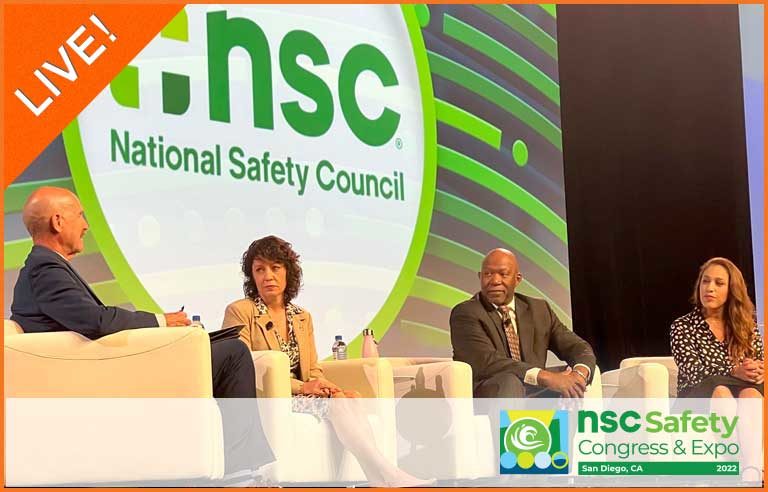Diversity, equity and inclusion: Panelists encourage employers to ‘get on the road’

When it comes to diversity, equity and inclusion in the workplace, NIOSH Director John Howard says many organizations are still learning how their efforts can benefit safety and health outcomes.
“We’re all starting out in this area,” Howard said Tuesday during a panel discussion at the 2022 NSC Safety Congress & Expo at the San Diego Convention Center. “None of us are mature professionals in DEI.”
For organizations that want to make an impact, however, taking a step forward can help. “It doesn’t necessarily matter what your motivation is; it matters that you’re going toward it,” said safety consultant I. David Daniels, one of the session’s seven panelists. “It’s impossible to have a safe culture when only some people are safe. That’s not safety.
“I know [DEI] is intimidating for some, but it’s a journey. Get on the road whenever you get there. As long as you’re pointed in the right direction, you’ll get there eventually.”
OSHA administrator Doug Parker led off the discussion by sharing the agency’s view on the importance of DEI in workplace safety. “It’s a central tenet for OSHA. We’re working to make sure that every worker – regardless of their gender, age, skin color, the language they speak or their citizenship status – knows their rights and gets the protections they deserve.”
As part of a discussion on using data to understand the impact of DEI, Ken Kolosh, manager of statistics at the National Safety Council, provided relative data with a national perspective. Based on 2020 data from the Bureau of Labor Statistics, the fatality rate for Hispanic/Latino workers increased 7%. At the same time, non-Hispanic and Black workers experienced decreased fatality rates. The 2020 numbers marked the fourth consecutive year that Hispanic/Latino workers saw an increase in the fatality rate.
Among non-fatal injuries, reporting issues have made the quality of data insufficient. Of the nonfatal injuries reported in 2020, Kolosh said 45% of the reports failed to include race and ethnicity information. In 2011, 37% didn’t include that data.
Knowing the challenges that all workers face every day on the job is paramount.
“When workers are sitting at the table, providing input into the program, that’s when you have a workforce that is engaged and has a buy-in into the safety program,” said Jessica Martinez, co-executive director of the National Council for Occupational Safety and Health. “I could never sit down and say I know what the job of a construction worker is. When you ask them, ‘What are the issues at your worksite and how can we come to a solution?’ you have workers who are more engaged. They feel empowered to use their voice.”
– Barry Bottino, reporting from San Diego

